Fleischmann HO 4342 RE4/4
Installation of a DCCconcepts Decoder
Installation of a DCCconcepts Decoder

This Fleischmann model 4342 locomotive has power pickup from eight wheels- great for consistent slow running. The analog model optionally can be powered from overhead catenary or from the rails. For DCC the catenary operation must be disabled.

This locomotive has five small screws (Arrowed), two at each end, and one central screw holding the body to the chassis. The four small screws are a bit difficult to get to – rotate the bogie to one side to access the screw and work your way around the locomotive chassis. Lift the body off the chassis.
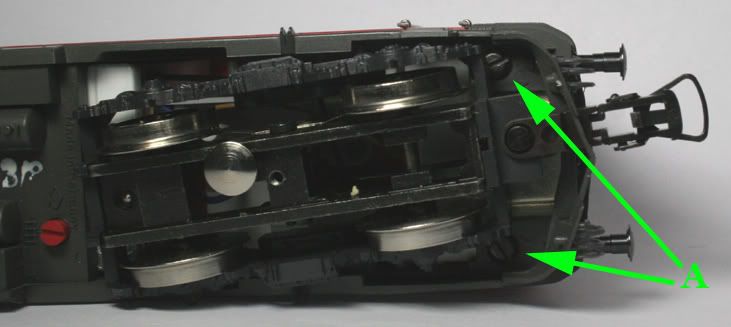
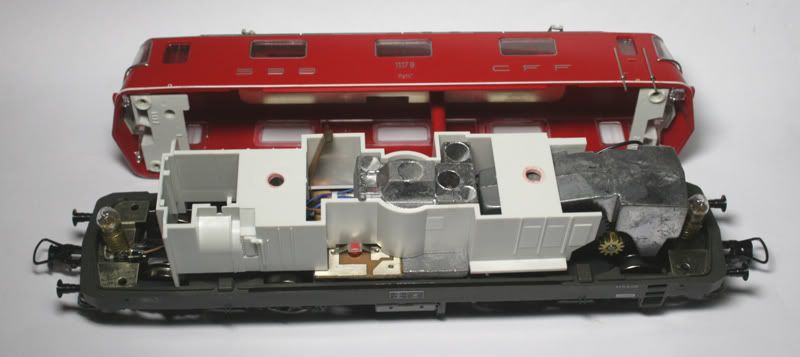
Remove all wiring and lamps from the circuit board , remove the lamps from the lamp holders at each end. Fleischmann use blue wire for one side of the pick-ups and black for the other. This locomotive has a driver in cab 2 so I thought to make that the normal forward direction. This makes the blue wire the right hand rail going forward.
| |
 Remove all wiring, inductors and capacitors from the motor except the black wire (this connects the motor body and the left-hand rail pick-ups) 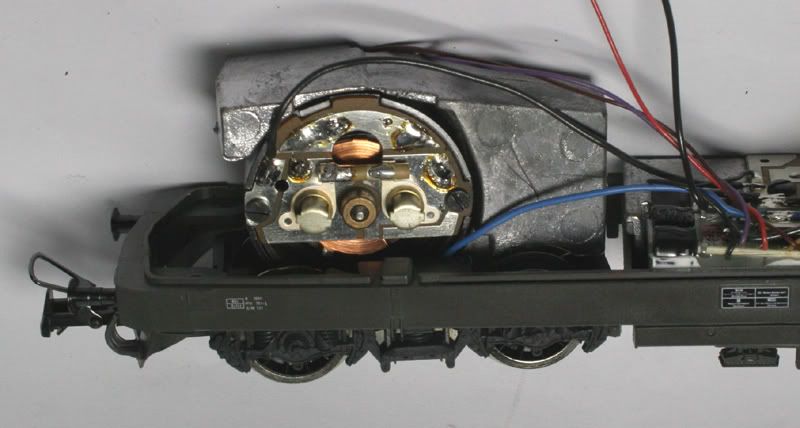  Above – The body is bare ready for conversion. Remove the rotating switch and the spring connection - connecting the circuit board to the pantograph strip. 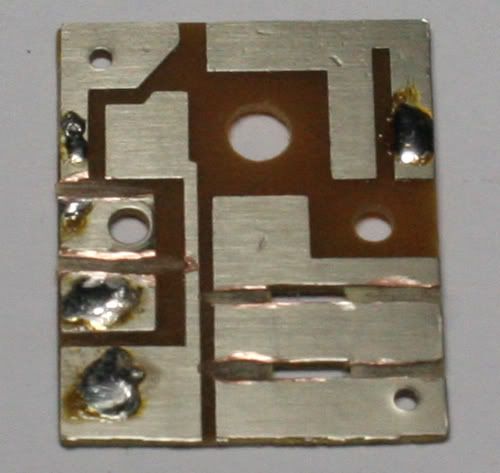 Modify the circuit boards with a Dremel cut off wheel. The contact strips will be for the Black, Red, Blue , Yellow and the White on the right. The mounting screws ground the circuit to the chassis- make sure these are isolated too. |
|
|
 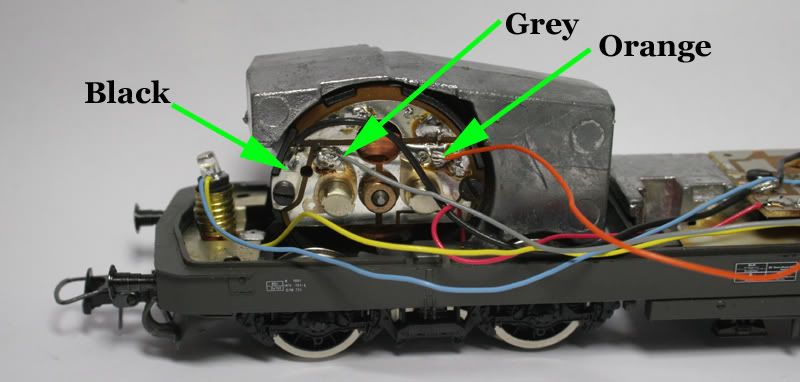 Above -The motor backplate wiring added, the red wire connected to the right hand rail pickups on the bogie. |
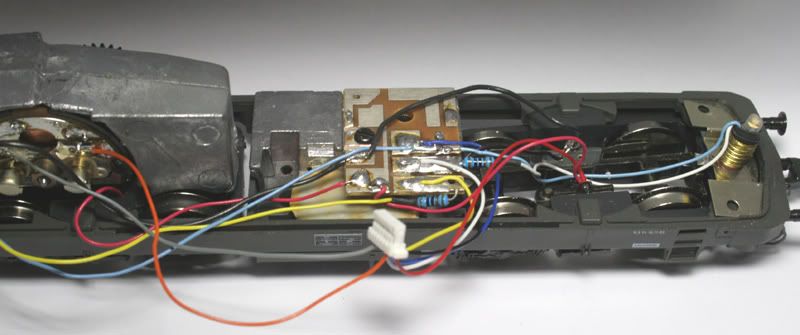
Above- Wiring for the un-powered bogie replaced with the correct colour. Decoder harness wired to the motor and PCB.
Below Decoder tucked in under the PCB in the position of the original FMZ decoder.

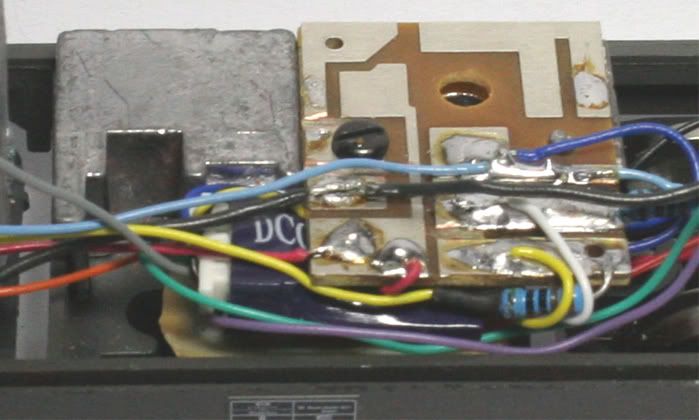
Above – Close up view of the decoder and PCB

Above – all wiring complete ready for the body to be replaced. The Blue component visible is a Stay Alive Capacitor and circuit -The stay alive has two primary effects: It aids slow running and greatly smooths super slow speed running as the decoder is no longer susceptible to frequent momentary power losses as always happens with very slow speed, even in bigger locos. It is NOT designed to make the loco run over large non conductive areas. It can also be parallelled to increase its effectiveness if wanted.
Before the body goes on test the locomotive on the Programming track to make sure the decoder will read. If there are any short circuits in the wiring, the system will report a short without damaging the decoder.
Test the loco on the track before putting the body back on.
I usually add some foil where the LEDs shine directly on the plastic , paint under the cab floor and paint the visible wires black.
No comments:
Post a Comment